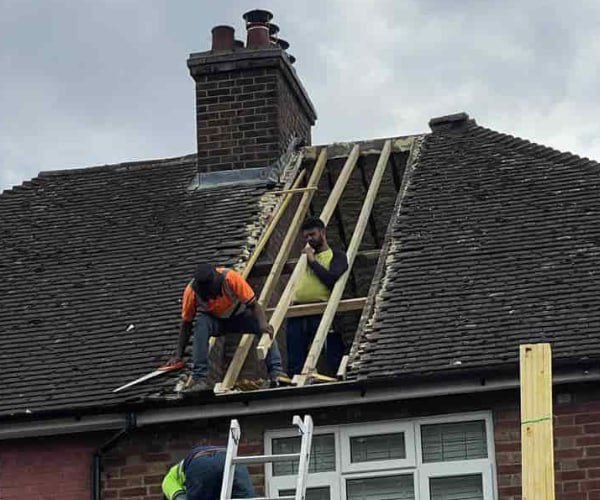The Role of Flat Roofs in Energy Efficiency
Introduction: Flat roofs are increasingly popular for residential and commercial buildings, offering a modern aesthetic and practical benefits. One of the most significant advantages of flat roofs is their potential to enhance energy efficiency. At WCT Roofing Long Buckby, we understand the importance of energy-efficient solutions and are here to explore how flat roofs can contribute to this goal.
Understanding Energy Efficiency in Flat Roofs
Energy efficiency refers to the ability of a building to use less energy for heating, cooling, and lighting, thereby reducing energy costs and environmental impact. Flat roofs can play a crucial role in improving the energy efficiency of a building through several key factors:
Insulation
Proper insulation is vital for maintaining a consistent indoor temperature. Flat roofs offer an excellent opportunity to install high-quality insulation materials, which can significantly reduce heat loss in winter and keep the building cooler in summer. This can lead to substantial energy savings by reducing the need for heating and cooling systems.
Reflective Roofing Materials
Flat roofs can be covered with reflective materials, such as white or light-coloured membranes, that reflect sunlight rather than absorb it. This helps to reduce the “urban heat island” effect, where buildings in urban areas absorb and retain heat, leading to increased temperatures. By reflecting sunlight, flat roofs can lower indoor temperatures and reduce the need for air conditioning.
Green Roofs
Green roofs, or living roofs, cover a flat roof with vegetation. These roofs offer several energy efficiency benefits:
- Thermal Insulation: The layer of soil and plants provides natural insulation, reducing heat loss in winter and cooling the building in summer.
- Stormwater Management: Green roofs absorb rainwater, reducing runoff and lowering the risk of flooding.
- Air Quality Improvement: Plants on green roofs help filter air pollutants, improving overall air quality.
Solar Panels
Flat roofs provide an ideal surface for the installation of solar panels. Solar panels harness sunlight to generate electricity, which can be used to power the building or even sold back to the grid. By generating renewable energy on-site, buildings with flat roofs can reduce their reliance on fossil fuels and lower their carbon footprint.
Cool Roof Coatings
Cool roof coatings are specially designed to reflect more sunlight and absorb less heat compared to standard roofing materials. These coatings can be applied to flat roofs to improve their energy efficiency. Cool roofs help to lower indoor temperatures, reduce the demand for air conditioning, and extend the lifespan of roofing materials by reducing thermal stress.
The Benefits of Energy-Efficient Flat Roofs
Cost Savings
Energy-efficient flat roofs can lead to significant cost savings over time. Property owners can see lower energy bills by reducing the need for heating and cooling. Additionally, installing solar panels can provide a renewable energy source, reducing electricity costs.
Environmental Impact
Improving the energy efficiency of a building has a positive impact on the environment. By using less energy, buildings contribute to lower greenhouse gas emissions and reduce their overall carbon footprint. Energy-efficient flat roofs can also help to mitigate the urban heat island effect, making cities more sustainable and livable.
Enhanced Comfort
Buildings with energy-efficient flat roofs tend to have more stable indoor temperatures, improving occupants’ comfort. Proper insulation and reflective materials help to maintain a consistent climate, reducing the need for constant adjustments to heating and cooling systems.
Increased Property Value
Energy efficiency is an attractive feature for potential buyers or tenants. Buildings with energy-efficient flat roofs will likely have higher property values and appeal to environmentally conscious individuals and businesses.
How to Achieve Energy Efficiency with Flat Roofs
Professional Installation
Ensuring your flat roof is installed correctly is crucial for achieving energy efficiency. At WCT Roofing Long Buckby, our experienced professionals can provide expert installation services, ensuring that your flat roof is properly insulated, sealed, and equipped with energy-efficient materials.
Regular Maintenance
Regular maintenance is essential to keeping your flat roof in optimal condition. Inspections and maintenance can identify and address any issues before they compromise the roof’s energy efficiency. This includes checking for leaks, repairing damaged insulation, and reapplying reflective coatings as needed.
Upgrading Materials
If your existing flat roof is less energy-efficient than you would like, consider upgrading to more advanced materials. This could involve adding insulation, applying cool roof coatings, or installing solar panels. Our WCT Roofing Long Buckby team can guide you on the best options for your specific needs.
Conclusion: Flat roofs offer a range of opportunities to enhance buildings’ energy efficiency. The potential benefits are substantial, from superior insulation and reflective materials to green roofs and solar panels. Investing in an energy-efficient flat roof allows you to enjoy cost savings, environmental benefits, and increased comfort.
Call us on: 01327 221 397
Click here to find out more about WCT Roofing Long Buckby
Click here to complete our contact form and see how we can help you with your roofing needs.

